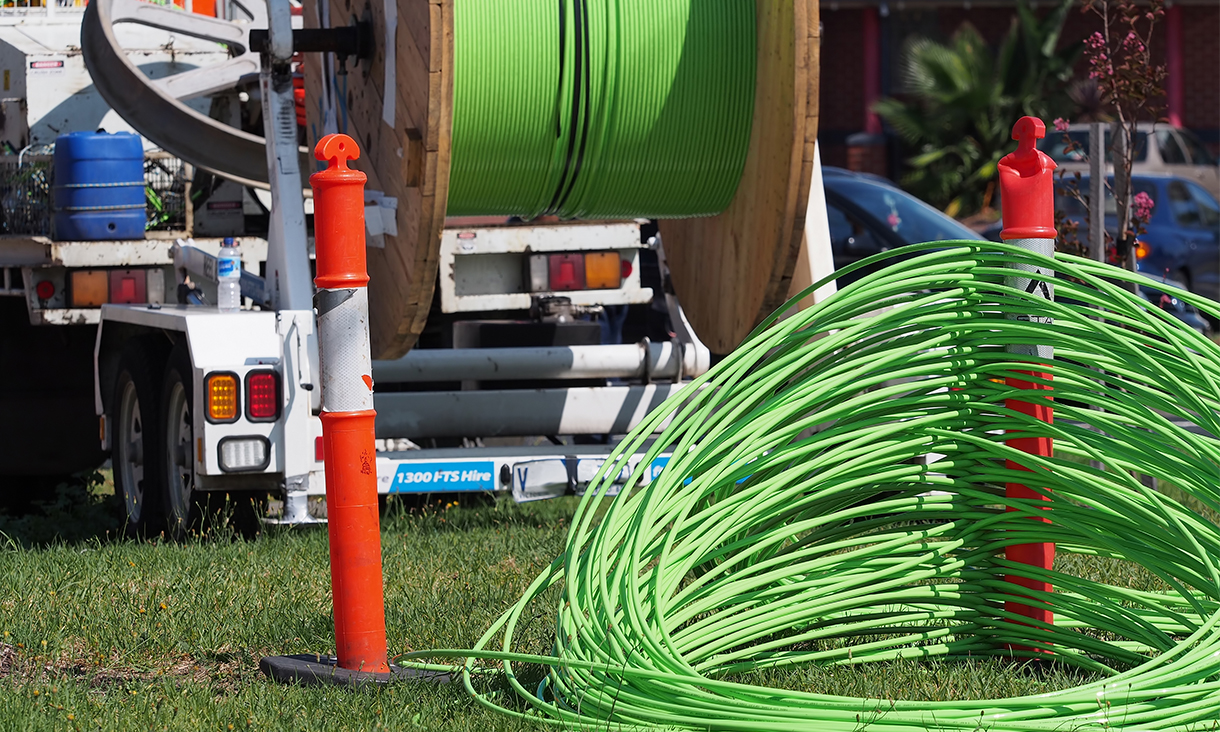The current government has laid the groundwork for NBN to be broken up and sold off. But this could end the NBN’s positive disruption of the telecommunications market, which includes lower prices, increased competition, improved access for consumers and more services being offered.
In a recent paper I outlined four options for the NBN:
· government retains the NBN
· sell NBN as a single entity
· disaggregate NBN technologies and sell them separately
· disaggregate NBN technologies, excluding satellite and fixed wireless, and sell off separately.
Breaking up the NBN could result in the creation of geographic monopolies, hurting rural and regional consumers especially.
Telstra’s recent decision to hive off its infrastructure into separate companies gives Australia the opportunity to do what New Zealand has done: create a new, publicly listed company that contains the NBN and parts of Telstra’s infrastructure.
But there is a valid argument for the government to retain NBN Co. as a government enterprise beyond the NBN rollout.
The NBN has brought about an unprecedented period of positive change in the telecommunications market. But there is more to be done, including a further reduction in the digital divide between urban and regional and remote areas, and upgrading from fibre to the node to fibre to the curb or fibre to the premises.
By retaining ownership of the NBN for the next decade, the government could provide a stable level playing field upon which the telecommunications market can thrive.
For the major carriers, the focus over the next decade will be to build competing 5G networks. The sale of the NBN during this time could return the industry to the chaos that existed before the NBN.
Who would buy the NBN?
The first major concern for anyone buying part of the NBN is the A$15 per customer per month paid to Telstra for a majority of the fixed connections to the NBN.
This is a payment for the use of Telstra’s existing infrastructure, such as the ducts that run along streets and the telephone exchanges where NBN systems are now located.
This payment is a major impediment to the NBN having a successful business model. There is some doubt whether Optus, Vodafone or TPG would bid for part of the NBN knowing that they would be required to make a monthly payment to Telstra for most of the customers they connect.
Telecommunications networks are a “natural monopoly”, similar to roads, rail, gas and electricity. This is because of the high startup costs of building the networks, especially for the segments closest to homes and businesses (also known as the last mile).
In high-value urban areas it is possible to build financially viable infrastructure that competes with incumbents. But this does not solve the problem of competition in lower-value outer urban, regional and remote areas.
No solution to this problem has been forthcoming. This is one of the reasons the NBN came into being in the first place.
How do you break up the NBN?
Outside of the high-value urban areas there is no guarantee of infrastructure-based competition, so regulation is required to ensure broadband in those areas keeps up with what is offered in the high-value urban areas.
The government has already introduced a levy to subsidise the cost of providing broadband in regional and remote areas. But more needs to be done to ensure regional and remote telecommunications is improved continuously.
Breaking up the NBN will also likely result in smaller geographic monopolies, with different technologies used in each network – fixed wireless, satellite and transit etc.
So rather than have one infrastructure monopoly (NBN Co.) wholesaling products and services, we could end up with the bigger telcos becoming monopoly providers by purchasing one or more of the technology footprints.
Consumers, especially those in regional and remote areas, will likely be hit with steep price rises with the end of uniform national wholesale pricing.
The New Zealand option
Telstra has announced that it is creating a standalone company called InfraCo, that will be:
… accountable for our copper and HFC networks; all our fibre network that is not dedicated to supporting mobiles; all ducts, pits and pipes; property including exchange buildings and data centres; and international and domestic subsea cables. These assets will be combined with Telstra Wholesale and the teams in Telstra Operations that provide services to NBN Co.
This provides Telstra with the opportunity to participate in the future sale of the NBN. Telstra could spin off InfraCo as a separate ASX-listed company, take on infrastructure investors for a future purchase of the NBN, or part of the NBN, and effectively follow what happened in New Zealand with Telecom New Zealand becoming Spark (retail/mobile) and Chorus (wholesale).
If Telstra splits into two ASX-listed companies so that InfraCo can purchase the NBN, the result would be a company with about A$10 billion in revenue and A$30 billion in infrastructure assets. This would be a viable company that is able to service the government debt repayments while making a reasonable return to shareholders.
It is likely this outcome would be more palatable to the rest of the telecommunications industry because the positive disruption to the market caused by the NBN would continue.
If the NBN is sold off, the focus must shift to the telecommunications legislation and regulations, setting a minimum broadband connection speed and capacity that infrastructure wholesalers are to provide without penalty, and focusing on how to further reduce the digital divide between urban and regional and remote areas.
The key for a future government decision on what to do with the NBN is that it should not be considered in isolation. There are a number of linked issues, including the universal service obligation, universal access, foreign ownership restrictions and wholesale competition.
Story: Mark A Gregory - Associate Professor
This story was originally published on The Conversation





